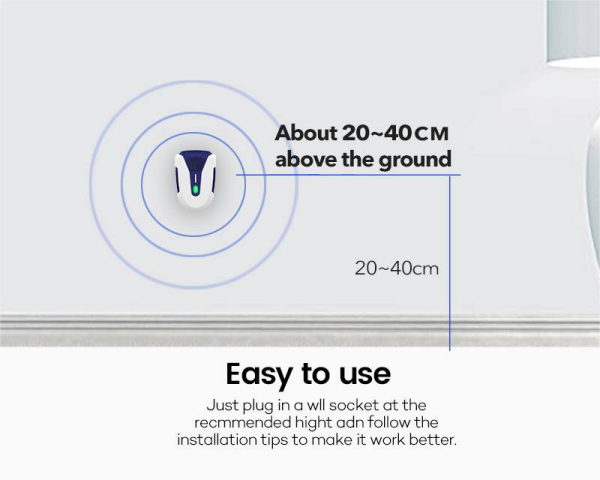Before placing your ultrasonic repeller, determine where there is rodent activity. Watch for chewing or gnawing marks, droppings, and footprints. Once you’ve identified which locations are being invaded, consider the following tips:
Consider surrounding surfaces: Hard surfaces reflect ultrasonic waves, so when placed near a hard surface, your ultrasonic repeller will be able to reflect off that surface, effectively covering a larger area. On the contrary, soft surfaces absorb ultrasonic waves. Avoid placing ultrasonic repellers on soft surfaces, such as furniture, carpets, or loose soil, as these will reduce the range and intensity of ultrasonic waves. Be sure to place your ultrasound equipment away from any soft surfaces.
Identify entrances: Beware of narrow passages where rodents can pass. Strategically place ultrasonic repellers around these narrow choke points to more effectively utilize each ultrasonic repeller. Avoid locations where rodents can roam freely, and ideally place the device where ultrasound can pass through.
Remember that rodents will do their best to get around your defenses, the same mechanism that makes walls reflect ultrasound to cover a larger area also prevents the ultrasound from passing through the wall. If you find that more than one possible rodent entrance is separated by walls, more equipment will be needed to deter rodents from each entrance.
Because different pests respond differently to ultrasonic waves, specific models of ultrasonic pest control equipment are designed for specific pests. If you plan to use ultrasonics to repel pests, be sure to understand which type of ultrasonic is effective for which pests. One ultrasonic device can be used to repel cockroaches, while another can specifically target mice.
Post time: Mar-28-2023

